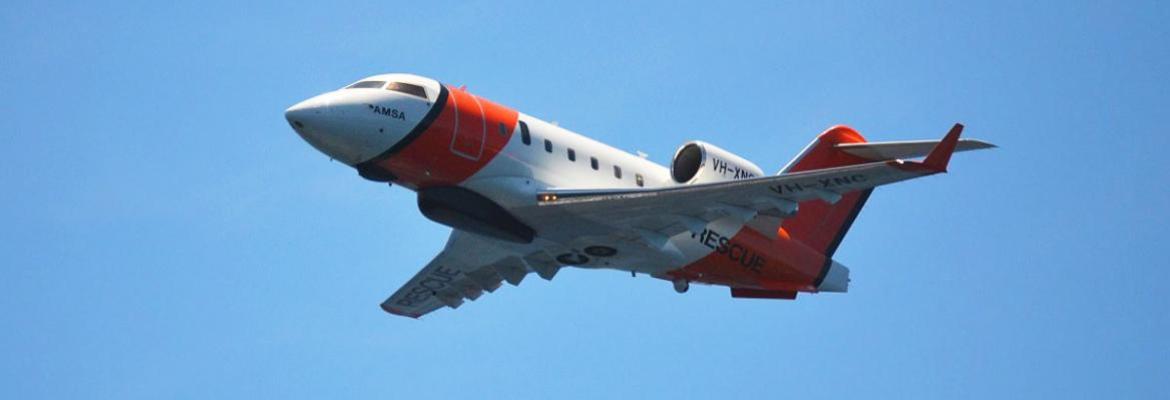
We are responsible for national maritime and aviation search and rescue across an internationally agreed search and rescue region covering approximately one-tenth of the Earth's surface.
A contract was signed in October 2014 with Leidos SAR Services Pty Ltd, formerly Cobham SAR Services Pty Ltd, to provide the next generation aircraft dedicated to search and rescue from late 2016 for a period of 12 years. Leidos acquired, modified, commissioned, operate and maintain the four Bombardier Challenger CL-604 special mission jet aircraft to provide a search and rescue capability over land and sea. The aircraft are available for search and rescue tasking at short notice, 24 hours a day, seven days a week.
In 2023, the Cairns based Challenger was painted with a design from a Badu Island artist, Michael Nona.
Facts and figures
The four Bombardier Challenger 604 jets have been specifically modified to our requirements and fitted with new generation sensors, high vision windows and air operable doors for aerial delivery of life saving equipment.
Transit speed—M0.75/398 knots true airspeed (KTAS) to M0.83/465 KTAS. This is equivalent to a commercial jet airliner speed.
Aircraft endurance—Up to 8 hours.
Flight range—Up to 3800 nautical miles (7037 kilometres) means the Challenger is well equipped at any of its base locations to respond to distress calls, as detailed in the map below.
Observation—The Challenger has large observer windows forward of the wings which assist in visual search operations
Electro-Optic Turret—A retractable fully stabilised, digital electro-optic system allows for long and short-range HD imaging in all weather conditions, using daylight, lowlight, and Infra-red (IR) imaging modes.
Search Radar—An X-band 360-degree surveillance radar is fitted, with multiple operational modes including short- and long-range target detection, target classification, and Search and Rescue Transponder (SART) modes.
Visual detection and ranging (ViDAR)—Sentient ViDAR maritime anomaly detection software with fixed staring three-camera array means that the Challenger has an improved capacity to conduct visual searches for small targets in the water, complementing the visual searching of the crew.
Communications—A comprehensive comms suite is onboard, including HF, Marine and Aviation VHF, UHF, and satellite phone radios. Vessels and aircraft can be tracked via Automatic Identification System (AIS) and Automatic Dependent Surveillance Broadcast (ADS-B) respectively. Radio transmissions and Emergency Beacon signals can be located using Direction Finding (DF) equipment.
Stores Delivery—An air operable door enables the Challenger to deliver life-sustaining stores and communications equipment to those in distress.



Base locations
The three bases for the Challenger allow for a comprehensive coverage of Australia's search and rescue region. The Challengers are based out of Perth, Melbourne and Cairns.
